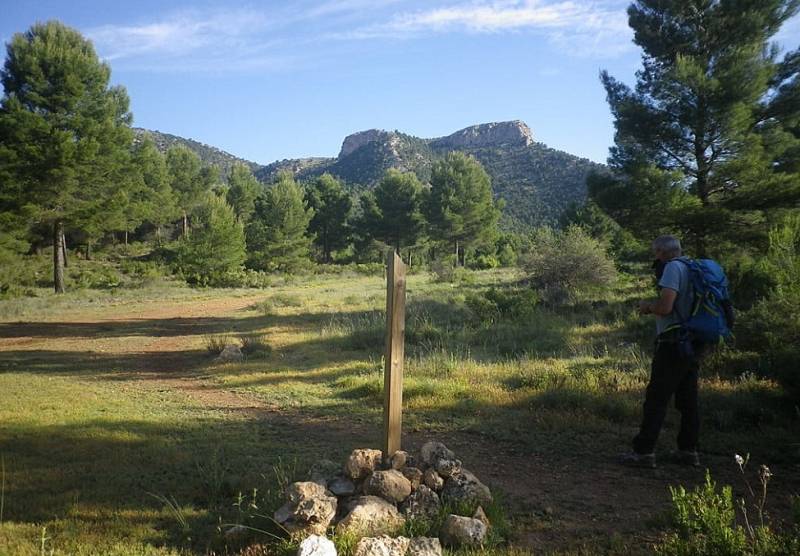

Guidelines for submitting articles to Mar Menor Golf Resort Today
Hello, and thank you for choosing Mar Menor Golf ResortToday.com to publicise your organisation’s info or event.
Mar Menor Golf Resort Today is a website set up by Murcia Today specifically for residents of the urbanisation in Southwest Murcia, providing news and information on what’s happening in the local area, which is the largest English-speaking expat area in the Region of Murcia.
When submitting text to be included on Mar Menor Golf Resort Today, please abide by the following guidelines so we can upload your article as swiftly as possible:
Send an email to editor@spaintodayonline.com or contact@murciatoday.com
Attach the information in a Word Document or Google Doc
Include all relevant points, including:
Who is the organisation running the event?
Where is it happening?
When?
How much does it cost?
Is it necessary to book beforehand, or can people just show up on the day?
…but try not to exceed 300 words
Also attach a photo to illustrate your article, no more than 100kb

Peña Rubia and El Nevazo in Caravaca de la Cruz
A popular walking and picnic area and home to a sleeping giant named Tomir!
 Peña Rubia is a vertical limestone peak in the Cerro Gordo area of mountainous terrain, surrounded by pine forest and a perfect mountain ecosystem. The escarpments reach a maximum altitude of 1306 metres above sea level, and as well as offering fantastic views to those who maki it to the top are also a perfect habitat for mountain goats!
Peña Rubia is a vertical limestone peak in the Cerro Gordo area of mountainous terrain, surrounded by pine forest and a perfect mountain ecosystem. The escarpments reach a maximum altitude of 1306 metres above sea level, and as well as offering fantastic views to those who maki it to the top are also a perfect habitat for mountain goats!
Close by in the municipality of Moratalla is the peak of El Buitre, reaching 1427 metres above sea level, and between Peña Rubia and El Buitre is a beauty spot known as El Nevazo de Arriba. This is home to a wide range of trees including Spanish firs, maples, poplars and cedars, and the beautiful forest setting makes it a popular picnic area and destination for those spending a day out in nature.
 El Nevazo de Arriba is reached by a serviceable forest track from Caravaca, passing through the picnic area of Nevazo de Abajo, which is equipped with stone tables and benches, barbecue grills, a fountain and shade.
El Nevazo de Arriba is reached by a serviceable forest track from Caravaca, passing through the picnic area of Nevazo de Abajo, which is equipped with stone tables and benches, barbecue grills, a fountain and shade.
A local legend in Caravaca tells that a giant named Tomir sleeps in the countryside west of the city, and some claim to be able to see his silhouette in the evening against the setting sun from Camino del Huerto, with the outcrop of Peña Rubia seen as his head. Tomir will awake, the myth goes, when Caravaca is invaded, at which point he will rise from his slumbers and liberate the city!
Further information about Caravaca is available from the tourist office (Plaza de España, 7, telephone 968 702424, email turismo@caravacadelacruz.es).
Or for more local information, including the Holy Jubilee Year as well as local news and what’s on, go to the home page of Caravaca Today.
Oficina de Turismo de Caravaca de la Cruz
 More information about the places of interest which can be visited in the municipality of Caravaca de la Cruz, along with what's on and local news can be found in the Caravaca Today.
More information about the places of interest which can be visited in the municipality of Caravaca de la Cruz, along with what's on and local news can be found in the Caravaca Today.
Caravaca de la Cruz, in the north-west of the Region of Murcia, is one of only 5 Holy Cities in the Roman Catholic world, a centre of pilgrimage, along with Rome, Jerusalem, Santiago de Compostela and Santo Toribio de Liebana, and is home to the Cross of Caravaca, the Vera Cruz.
The status of Holy City was bestowed by Pope John Paul II in 1998, granting the City a Permanent Jubilee year every 7 years for perpetuity, the first one held in 2003 and the next in 2024.

The strategic and natural advantages of Caravaca de la Cruz have attracted the attention of settlers for more than 800,000 years, the Cueva Negra yielding remains of Homo Heidelbergensis, forbears of the Neanderthals and the municipality also houses important archaeological remains from the Argaric, Iberian and Roman cultures. many of these can be seen in the Municipal Archaeological Museum.
 As a border town caught between the Catholic forces of Castille and the last remaining Moorish stronghold in Spain, Granada, Caravaca had a turbulent medieval history, but it was during this period that the legend of the Cross of Caravaca was born, bringing the religious orders which shaped the structure of Caravaca today, with its impressive hilltop castle and eclectic collection of churches and monasteries, religious tourism today being a backbone of the town´s economy.
As a border town caught between the Catholic forces of Castille and the last remaining Moorish stronghold in Spain, Granada, Caravaca had a turbulent medieval history, but it was during this period that the legend of the Cross of Caravaca was born, bringing the religious orders which shaped the structure of Caravaca today, with its impressive hilltop castle and eclectic collection of churches and monasteries, religious tourism today being a backbone of the town´s economy.
Caravaca de la Cruz is a municipality with important natural resources, including extensive forests, part of which have protected status due to their wealth of flora and fauna, and due to the abundant water supplies is also a major area for canned fruit production, apricots in particular being an important crop.
 Caravaca is renown for its important May Fiestas, held in honour of the Vera Cruz, which also incorporate the Moors and Christians celebrations and the Running of the Wine Horses.
Caravaca is renown for its important May Fiestas, held in honour of the Vera Cruz, which also incorporate the Moors and Christians celebrations and the Running of the Wine Horses.
Caravaca de la Cruz is also the home of Europe´s largest collection of ethnic instruments at Barranda, the Museo de Música Étnica Barranda and is the location of the Barranda festival de Cuadrillas, which celebrates the Region's ethnic music traditions.
The municipality is home to around 26,000 inhabitants and shares boundaries with Moratalla, Cehegín, Lorca, Puebla de Don Fadrique in the province of Granada and Vélez-Blanco in the province of Almería.
Opening times:
Weekdays: 10.00 to 14.00 and 16.30 to 19.30
Saturdays: 10.30 to 14.00 and 16.30 to 19.30
Sundays and public holidays: 10.30 to 14.00
Click for map, Caravaca de la Cruz Tourist Office





















